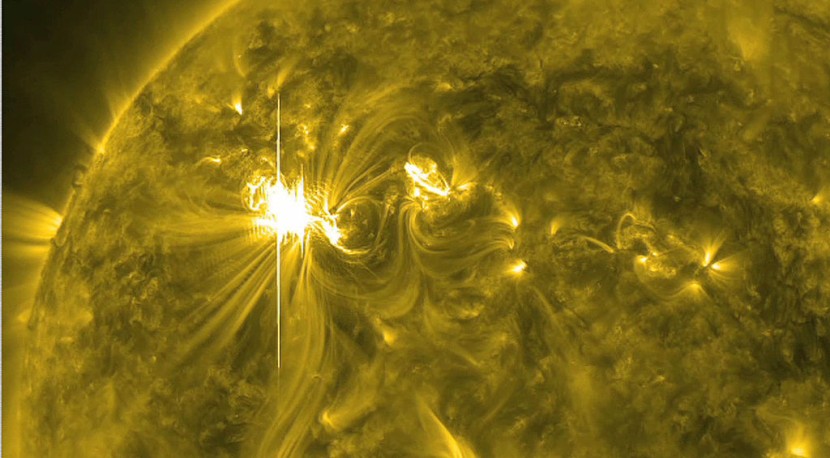
Earth got hit by a powerful solar storm that has caused the problem for systems affected by the fluctuating magnetic interference due to the increased output of the Sun's radiation.The sub-ejection or solar flare usually occurs, but it is one of those larger than normal ones.
One indicator was seen in Scotland, Norway, and New Zealand, where aurora activity was observed as the flare hit the atmosphere.
Solar Flares
The Sun ejecting solar radiations has the power to scramble and disrupt radio and GPS signals from satellites due to the nature of the cosmic event.
These sun storms, such as coronal mass ejection (CME), cite Space Weather Live, when an increased number of charged particles and excess electromagnetic radiation is emitted, is a regular thing.
But the CME in question would have more effects. Last March 11, a 373-mile-per-second burst of energy was expelled from the Sun's surface, surrounded by a solar flare, according to the Express.
Scientists said they weren't concerned about the intensity of solar emission but how long it would be happening, it lasted 12 hours.
Radio, GPS Interference
Based on the data of the US Space Weather Prediction Center that calls it a G2, depending on the indicators on the five-point G-scale used. Ranking from G1 is the weakest and G5 the worst.
The US SWPC publish a post saying that the CME will be affecting conditions until Monday. Experts explained that a G2 solar storm could cause minor power failures, interruption of satellite operations in low-Earth orbit, and electromagnetic interference of high-frequency radio transmissions at high latitudes.
When the cosmic event happened, remarked space weather expert Dr. Tamitha Skov. Posting on social media that amateur radio users were well aware of what was happening.
To minimize the effect of the increased solar emissions, an advisory said that going lower in radio could help. These CMEs have a more negligible effect on the night side of Earth.
Some areas of the globe most affected by the solar storm would be seen in the aurora borealis and australis, with more frantic light displays caused by exposure to the Sun's outward radiation. A glow in the sky is the surest sign.
Earth's atmosphere is composed of oxygen that glows green were enervated, and nitrogen is seen as blue, pink, and purple. As Dr. Skov highlighted, stunning auroral displays were seen in such locations as Australia, Norway, Scotland, and Sweden.
Experts of the SpaceWeather say the storm is getting less, and the activity could happen again if the condition is met at another time, but only G-1 only. They added the Auroras would be less by March 14.
In September 1859, a coronal mass ejection unleashed the most powerful geomagnetic storm ever documented, called "the Carrington Event" by researchers.
The storm caused chaos on Europe's and North America's telegraph networks, as well as the recently laid transatlantic connection that linked them. Fiber optics of today are more protected than before.
Scientists with enough magnetic interference reported a G-2 rated Solar Storm to disrupt radio and GPS signals in certain hemispheres on the globe; these CMEs are volatile and can cause massive effects.
Related Article : Global Internet Could Shut Down for Weeks When Solar Storms Hit With Electromagnetic Surge








